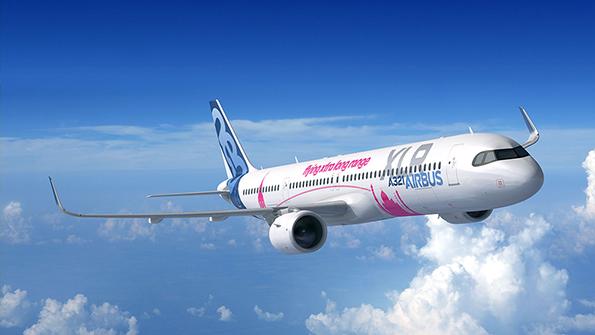ANALYSIS: Long-Haul Narrowbodies Will Help Bridge Gaps As Airlines Shrink

The airline industry and its main aircraft suppliers, Airbus, Boeing and Embraer, will be in survival mode at least through the upcoming winter season and until a broadly distributed COVID-19 vaccine allows public life worldwide to return to normal.
With airlines operating their much-reduced schedules, some aircraft types are proving to be more popular than others, a trend that is likely to continue even after the novel coronavirus pandemic subsides and demand recovers.
Most industry observers agree that smaller widebodies and long-haul capable narrowbodies are going to benefit the fastest when commercial aviation recovers. These aircraft offer the least amount of risk in terms of trip costs and are also competitive in terms of unit costs. Airbus’ A321XLR, offering 4,700 nm of range, is slated to enter service in 2023. Airlines have placed more than 400 firm orders for the aircraft, according to the manufacturer.
However, international travel restrictions have put a premium on cargo capacity, giving some widebodies an advantage, even if it is short-lasting. This is especially true for airlines like Cathay Pacific and Singapore Airlines.
But longer-term, models like the A321XLR give airlines the option either to add frequencies to large-volume, long-haul markets or to introduce nonstop flying on thinner routes that would not be viable for even the smallest widebodies like the Airbus A330-200 or Boeing 787-8.
There is also a significant replacement cycle nearing as the mostly North America-based Boeing 757 and 767 fleets were coming up for retirement regardless of the pandemic, which has accelerated those retirements.
In the near term, airlines will be smaller. IATA’s latest outlook sees revenue passenger kilometers falling 66% in 2020 compared to 2019—a year that saw demand constrained by several issues, notably the Boeing 737 MAX fleet’s grounding and, ironically, air traffic congestion and infrastructure constraints.
How airlines are using their fleets in the post-pandemic world varies by a number of factors, including region, strategy and available aircraft mix. In some cases, however, the pandemic has accelerated the retirement of aircraft types that no longer work in any network, notably the Airbus A380, A340 and Boeing 747-400, which are either too large or too costly to operate in massively reduced long-haul markets.
The expected success of long-range narrowbodies, meanwhile, is a double-edged sword for the OEMs. The widebody market had been weak for some time and the emergence of new strategic aircraft options for long-haul routes adds choices. Not all widebodies are affected in the same way. Even at the peak of the coronavirus pandemic in spring 2020, airlines have generally kept a larger share of their Boeing 787 and A350 fleets flying as they are most efficient and, particularly with the 787, among the smallest widebodies. Some other types have proven to be less popular. A total of 353 Boeing 777s had been stored by the end of September versus just 58 a year earlier, according to Aviation Week Network Fleet Discovery data. The number of stored 787s has risen from 25 to 189. On the Airbus side, 402 A330 classics are stored, versus just 56 in September 2019. But the stored A350 fleet has risen from 6 to a relatively modest 58 aircraft.
Longer term, further segmentation and aircraft choice may lead to aircraft types being dispatched more optimally according to capabilities. Both the 787 and the A350 have been flying routes such as Europe-US east coast for which they are over capable, particularly in terms of range. The extra range capability translates into unnecessary weight, fuel burn and higher than necessary trip costs.
Those shorter long-haul routes had been a primary target for Boeing’s new midmarket airplane (NMA), a program abandoned earlier this year.
The success of the A321neo (including the long-range versions LR and XLR) is an important factor in Airbus’ jump in the narrowbody market share, which, in terms of the current order backlog, is estimated to be above 60%. Boeing normally could not accept such a competitive disadvantage, compounded by a flood of around 1,000 order cancellations for the 737 MAX since the beginning of 2020. Yet, the combination of the extended 737 MAX grounding—resulting from two fatal crashes and a recertification program—and the devastating financial impact on Boeing’s commercial business make it all but impossible for the manufacturer to react in the short- or medium-term by launching a new program that addresses the high end of the narrowbody spectrum.
